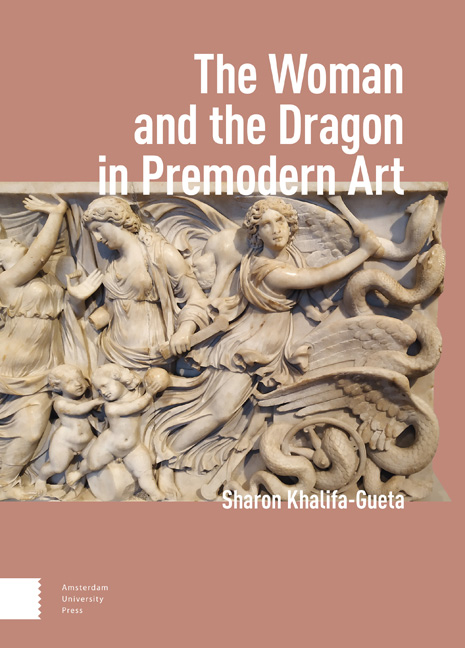Book contents
- Frontmatter
- Contents
- Acknowledgments
- Introduction
- 1 The Dragon
- 2 The Cave and the Womb: The Myth of Cadmus and the Myth of Apollo and Python
- 3 Eligible Wives and Monstrous Women: Andromeda and Medusa
- 4 Medea – The Holy Woman and the Witch
- 5 Eve and Lilith — Christianizing the Great Goddess and the Dragon
- 6 Saint Margaret – Taming the Dragon
- Conclusion
- Bibliography
- Index
4 - Medea – The Holy Woman and the Witch
Published online by Cambridge University Press: 17 February 2024
- Frontmatter
- Contents
- Acknowledgments
- Introduction
- 1 The Dragon
- 2 The Cave and the Womb: The Myth of Cadmus and the Myth of Apollo and Python
- 3 Eligible Wives and Monstrous Women: Andromeda and Medusa
- 4 Medea – The Holy Woman and the Witch
- 5 Eve and Lilith — Christianizing the Great Goddess and the Dragon
- 6 Saint Margaret – Taming the Dragon
- Conclusion
- Bibliography
- Index
Summary
Abstract: Medea is a multilayered persona, whose myth commences in Colchis. She was originally a holy woman who betrays both the holy dragon and her father, and flees with Jason; in Iolcus she reveals her witch persona as a healer and a murderer; in Corinthus, her rage leads to a killing spree that ends with her slaughtering her own children; in Athens, she attempts to compel the king to murder his own unrecognized son. By examining these myths in conjunction with artistic representations of Medea, I reveal the complex relations between this heroine and dragons, while highlighting significant themes embedded in artistic images – including redemption, residues of child-sacrifice rituals, and apotheosis. This chapter focuses on the bias against powerful women associated with dragons.
Key Words: Medea, Jason, Golden Fleece, Hesperides, redemption, bias, witch, King Pelias
As the previous chapters have demonstrated, the union of a woman, and more specifically of a virgin, with a male or female dragon is imbued with a sacred character and an oracular function. As the following discussion will reveal, a full understanding of this motif requires an exploration of ancient representations of female witches, and of their particular allegiance with dragons. The comparative study of the myths of Medusa and Andromeda related them to the discourse on female virginity and fertility in patriarchal Greco-Roman cultures, while exploring their function as carriers of cultural values and morals in the context of both ritual and history. The current chapter further elaborates on these themes by turning to the intriguing and unsettling myth of Medea and its visual representations. As I will demonstrate, these representations are concerned both with the extraordinary ability of powerful female figures to inflict harm, relating it to the stereotypical concept of the witch in antiquity and to the bias against powerful women, as well as to the historically gendered role of women as specializing in herbs and healing potions.
The Medea myth offers a unique case study, since her figure is depicted in diverse ways and with contradicting features. Her representations reflect the dissonance inherent in the motif of the woman and the dragon, treading a fine line between the holy woman who can heal, communicate with dragons, perform magic, and make prophecies, and the witch who murders, betrays, steals, and cons.
- Type
- Chapter
- Information
- The Woman and the Dragon in Premodern Art , pp. 127 - 192Publisher: Amsterdam University PressPrint publication year: 2023



